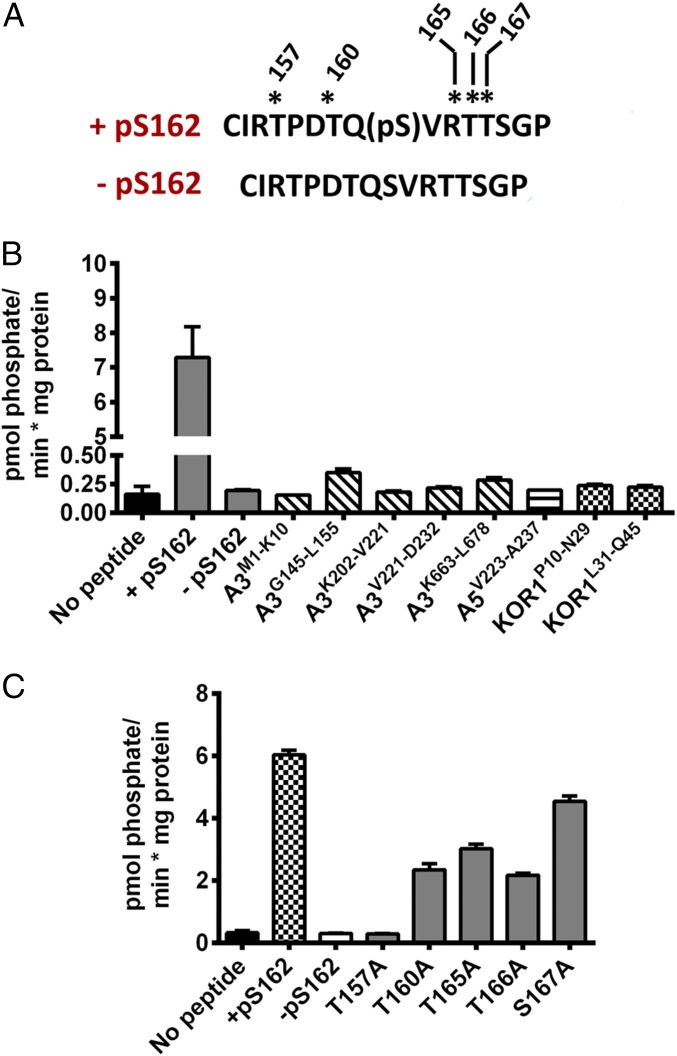Fig. 3.
BIN2 can phosphorylate CESA1 in vitro. Recombinant Arabidopsis BIN2 was assayed using a series of peptides by in vitro kinase assays. (A) Region of Arabidopsis CESA1 that is phosphorylated is shown with the position of the +pS162 and its unphosphorylated counterpart (−pS162) indicated. Asterisks indicate potential phosphorylation sites in the +pS162 peptide. (B) Recombinant BIN2 was screened for activity against synthetic peptides representing experimentally supported phosphorylation sites in Arabidopsis CESA1 (gray bars), CESA3 (hatched bars), CESA5 (lined bar), and KOR1 (checked bars). (C) Synthetic peptides containing alanine substitutions at all possible S/T residues in the +pS162 peptide were assayed as substrates for recombinant BIN2. All assays were repeated at least two times in triplicates. Error bars represent SEM (n = 3).

